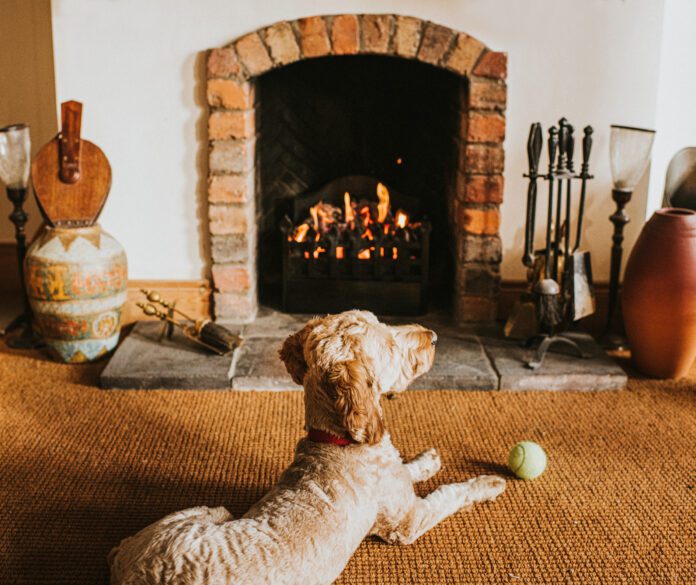
Carbon monoxide is just as deadly for your dog as it is for you. Don’t be fooled into thinking dogs can smell carbon monoxide and move away from it. Dogs cannot smell carbon monoxide. Carbon monoxide is odorless.
While there are reports of dogs refusing to go back into a home with carbon monoxide in it, it’s not because of the smell. It’s more likely those dogs are reacting to how awful they felt when they were inside versus how they feel outside in fresh air.
Signs and symptoms of carbon monoxide poisoning in dogs include:
- Behavioral changes (fear, aggression)
- Drowsiness
- Incoordination
- Vomiting
- Trouble breathing
- Exercise intolerance
- Rapid heartbeat
- Bright red lips and gums
These signs will progress to collapse, seizures, coma, and death, if the exposure continues.
Get the Dog Outside
If you’re worried your dog may be suffering from carbon monoxide poisoning, GET HIM OUTSIDE! The treatment for carbon monoxide poisoning is oxygen. Oxygen will eventually displace the carbon monoxide, but it takes hours.
If your dog shows any of the signs described above, get to the veterinarian as soon as possible. Dogs with any of these symptoms will be hospitalized for pure 100% oxygen therapy (room air is only about 21% oxygen) and all necessary supportive measures.
Severity of Carbon Monoxide Exposure
Dogs without symptoms of carbon monoxide poisoning may only require tincture of time in fresh air, but for your dog’s sake, check with your veterinarian to be sure. If you and/or your veterinarian are not sure whether there has been carbon monoxide exposure, a blood test called carboxyhemoglobin level can be run on your dog to determine exposure.
Severely affected dogs who show a lack of alertness or are comatose sometimes survive with aggressive treatment, although the prognosis is guarded. Those that do survive may later develop neurologic signs. This can happen anywhere from a few days to a few weeks after the event. It is called delayed encephalopathy, and it happens because of damage to the brain. The most common signs are deafness and blindness, and they are usually permanent.
Take Precautions
For your dog’s sake and your own, get your home checked by a heating professional. Remember, carbon monoxide is a byproduct of combustion, as in gas furnace, car, stove. Get recommendations for reliable, accurate carbon monoxide detectors—the EPA reports not all CO detectors are the same—and install them.
Carbon monoxide poisoning is better prevented than treated. Never use a gas heater or grill in unventilated areas. Never house your dog in your garage in case of accidentally leaving the car engine on, which is happening with increasing frequency due to super-quiet hybrid engines. And finally, if you don’t have carbon monoxide detectors in your home, get them.
How does carbon monoxide poisoning happen? Carbon monoxide displaces oxygen off hemoglobin, the oxygen-carrying protein in bloodstream, and binds tightly to hemoglobin. This results in low oxygen levels in the blood (called hypoxemia), which results in low oxygen levels in the tissues (called hypoxia). No organs can function without oxygen.




